Today marks the three month anniversary of our epic wedding (married life has been lovely so far, thanks for asking!), so let us commemorate it with a final wedding article: an entertaining yet educational piece using the final photos from our nuptials to illustrate the glorious traditions of a Jewish wedding.
The Ketubah is the sacred Jewish marriage contract, and Colin and I signed it in an intimate room right before the actual wedding ceremony. A Ketubah is usually artfully decorated (can you see how pretty ours is?) and can be privately commissioned by an artist, or ordered from a site like Ketubah.com (truly, a site of that name exists) where we got ours.
What is so wonderful about a Ketubah is that you can customize it with language fitting to your type of marriage. You can pick very traditional (borderline sexist) language, or go the opposite extreme and get a wildly hippie Ketubah which declares, “Our marriage paints sparkling streaks of love into the universe!”
Colin and I chose a delightful middle ground for our marriage contract, and the main text of our Ketubah (which now hangs above our fireplace) reads:
“We pledge to nurture, trust and respect each other throughout our married life together. We shall be open and honest, understanding and accepting, loving and forgiving, and loyal to one another. We promise to work together to build a harmonious relationship of equality.
We shall respect each other’s uniqueness and help one another grow to our fullest potential. We will comfort and support each other through life’s sorrows and joys. Together, we shall create a home filled with learning, laughter and compassion, a home wherein we will honor each other’s cherished family traditions and values. Let us join hands to help build a world filled with peace and love.”
Isn’t that great???
After the Ketubah signing comes The Bedekken veiling ritual.
The story goes that this Jewish wedding ritual began in Biblical times when Rachel’s father tricked Jacob into marrying Leah instead of Rachel by hiding her with a thick veil.
In the Bedekken ritual, the groom makes sure there hasn’t been a dastardly bride switcheroo. It also creates some lovely photo opportunities as the sunlight streams in through the gauzy veil.
“Check and make sure it’s Lillie!” hissed my brother to Colin.
It was me!
After the Bedekken ritual, the wedding party goes to its separate preparation rooms by gender, and the wedding guests file into their seats for the ceremony.
Once everyone is seated, the music begins, and the wedding party dramatically enters. Front and center at a Jewish wedding is The Chuppah: the graceful square canopy that represents the home that the Bride and Groom will be creating. We were so honored that Colin’s Great Aunt, Sandy, created our stunning Chuppah from scratch with the help of her husband, using the lacy white material from her own wedding dress. What a family treasure.
The family and friends of the couple stand around the Chuppah to show their support, and the officiant (a Rabbi or, in our case, Colin’s Cantor from his childhood Synagogue in Ohio) and Groom wait expectantly under the Chuppah for the Bride to enter.
After a slight delay/disaster involving a diva moment about my misplaced lipstick (hilarious, since I generally hate makeup) I triumphantly strode down the aisle on the arms of my Mother and Father!
On the advice of many, I took my time and really gazed at the faces of each and every person in the audience. It is a rare and precious day to have so many people close to you together in one room. At last I arrived at the Chuppah to meet my Groom.
Cantor Sager did an absolutely phenomenal job with the wedding ceremony, weaving together Jewish stories and tradition with wonderful true details about Colin, me, and our family and friends. Oh, and if you note the photo above, you’ll see that part of my 6’7″ little brother’s duty as Maid of Honor was to hold my dainty flower bouquet!
When we exchanged our rings I gasped audibly, and the Cantor assured, “Yes, this is real!” Part of why I gasped was because I was so happy to be marrying such a wonderful guy.
Another reason was I was (and still am) awed by the generosity of Colin’s family in giving me Colin’s Mother‘s Mother’s ring to wear. As you can see in the photo above, this wedding ring is breathtaking. It is a true original. Colin’s Grandmother wore it in her happy marriage for over 50 years, and it exudes love.
There were two other Jewish heirlooms that we used in our ceremony. The Kiddush cup from which we both ceremoniously drank wine was the same Kiddush cup that Colin’s happily married parents used on their wedding day. The Tallis that Cantor Sager wrapped us in was the Tallis that Colin wore as an adolescent!
Then came the moment for which Colin had been building leg muscle strength for months: The breaking of the glass!
At the end of a Jewish wedding ceremony, but before the kiss, the Groom places a glass in a protective bag and smashes it with his foot. Those of us who have been to several Jewish weddings have seen at least one embarrassing moment when the Groom’s foot merely went “doiiiing!” on the glass and no breakage occurred. The glass break is a highly manly feat of strength and coordination. Proudly, I report that Colin smashed that glass like a champ!
In an innovative twist on Jewish culture, Colin’s Mother purchased us a special glass which, once smashed, you mail back to the company and they assemble the pieces into any number of artistic forms and Judaica, including Menorahs, Mezuzahs and more.
And then the wedding ceremony was complete, and the Bride and Groom (us!) could kiss as Husband and Wife.
The crowd erupted into uproarious applause, and the cameraman from TLC zoomed in for a shot that would ultimately be in the closing segment of our Reality TV debut on “I Found the Gown.”
What a miraculous moment, to go from being unmarried to a “Wife” and “Husband!” As we walked away from the Chuppah and back down the aisle, hand in hand, we looked at the sea of beloved faces. What a wonderful day!
In a traditional Jewish wedding, the Bride and Groom get to spend the first few minutes of their lives as a married couple alone together. This is called the Yichud.
This is a fantastic tradition because, as Cantor Sagor correctly predicted, there is no other time during the glorious wedding evening when you’re alone together.

During our ten-minute Yichud, Colin and I got to gasp about being married, hug, eat snacks, hydrate, and make jokes. Unfortunately, we forgot that the microphone for the reality TV show was still in Colin’s pocket and turned on. To our great relief, none of that secret footage made it onto TLC!
At the end of the Yichud, two friends came in and helped me bustle the long train of my dress (a feat fit for a rocket scientist), and Colin and I entered the Reception!
After the Reception, Dinner, Speeches, Cake, and First Dance, came one of the best parts of a Jewish wedding: The Horah! During the famous Horah dance, guests turn in a joyful circle, criss-crossing their feet to the tune of “Hava Nagila.”
Then the Bride and Groom (and sometimes the parents, but ours politely yet forcefully declined) are hoisted into the air for the rest of the song, pushed up and down, almost hitting the ceiling as the crowds swirl around them! It is terrifying and exhilarating, as demonstrated by the first and last photo of this article.
So, dear Readers, what are your thoughts? If you hadn’t heard of these traditions before, which ones stand out to you? Which wedding traditions from different cultures do YOU love? Do comment.
Photo credits: Photos 1, 7, 8, 10, and 12 are by Krista Photography. All other photos in this article are by my cousin Doug of Doug Schneider Photography.
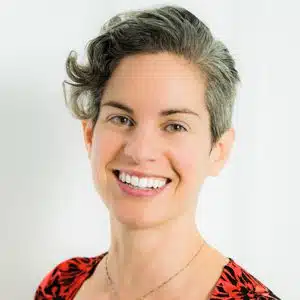
The author, Lillie Marshall, is a 6-foot-tall National Board Certified Teacher of English, fitness fan, and mother of two who has been a public school educator since 2003. She launched Around the World “L” Travel and Life Blog in 2009, and over 4.2 million readers have now visited this site. Lillie also runs TeachingTraveling.com and DrawingsOf.com. Subscribe to her monthly newsletter, and follow @WorldLillie on social media!


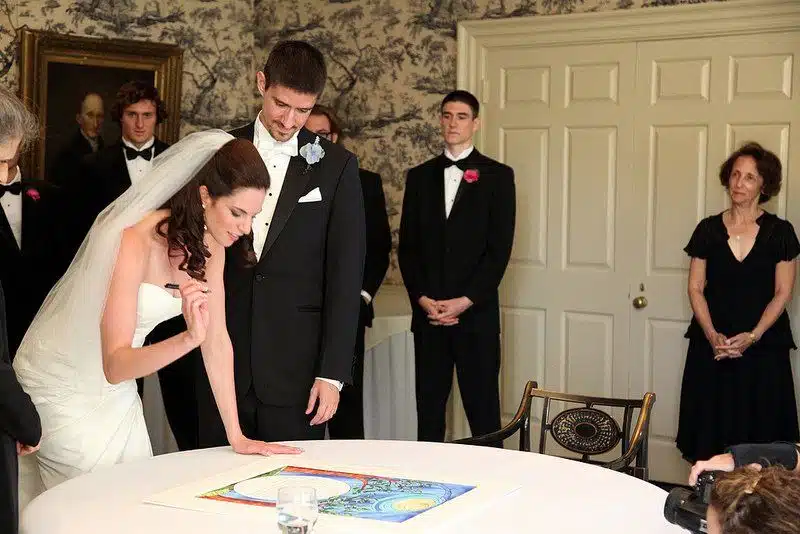
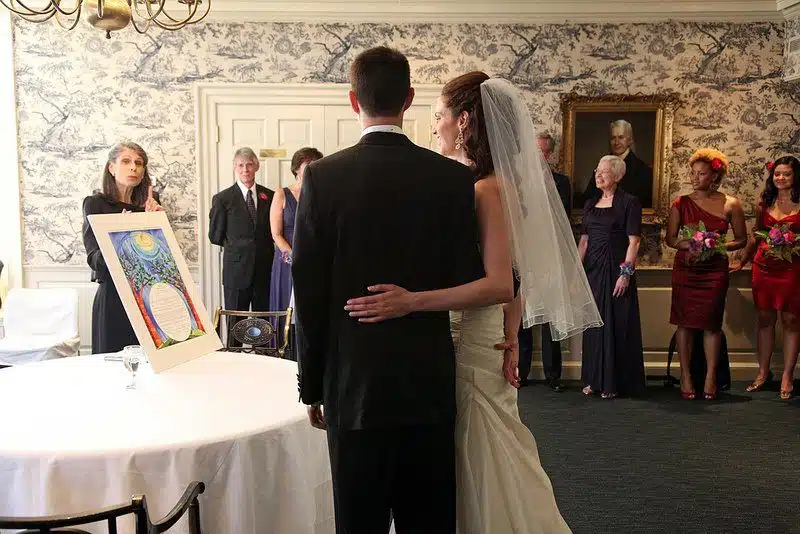
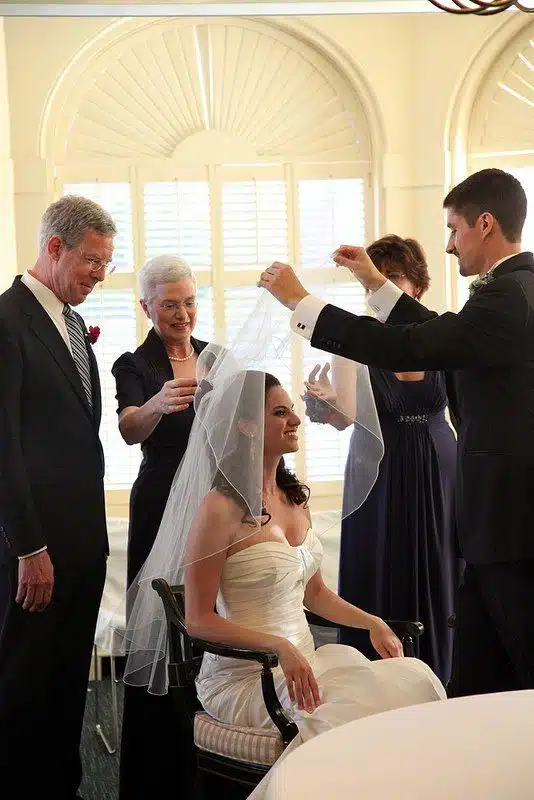
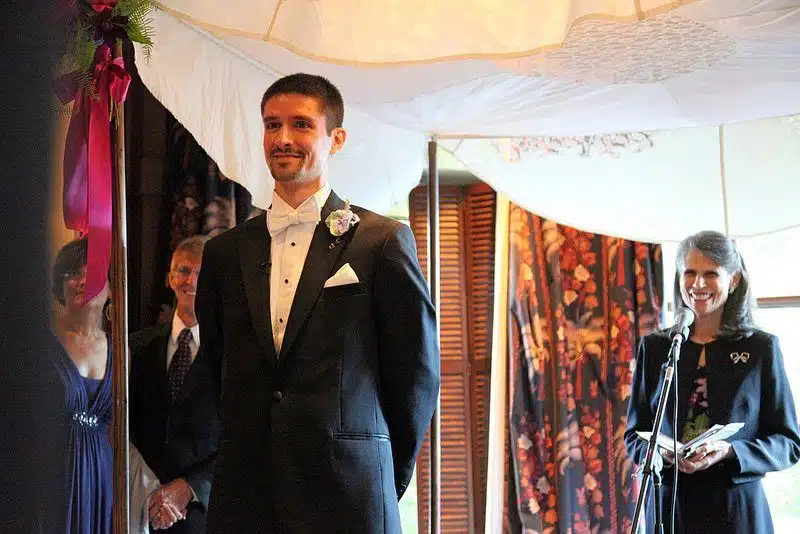


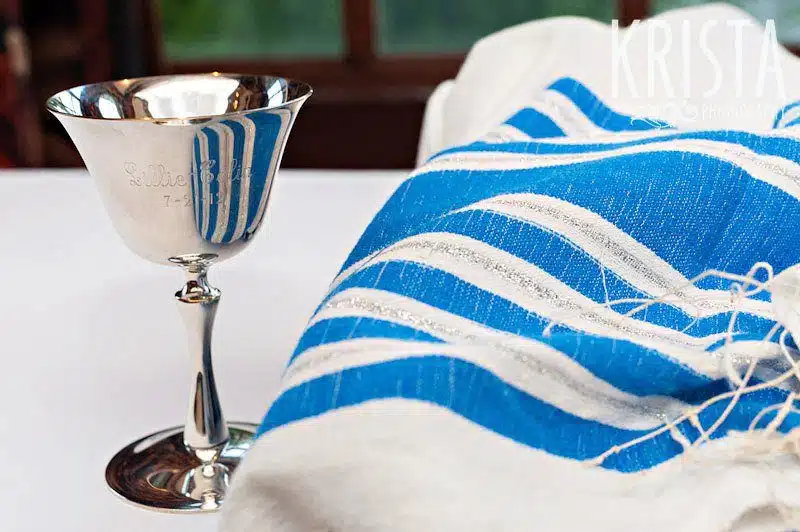
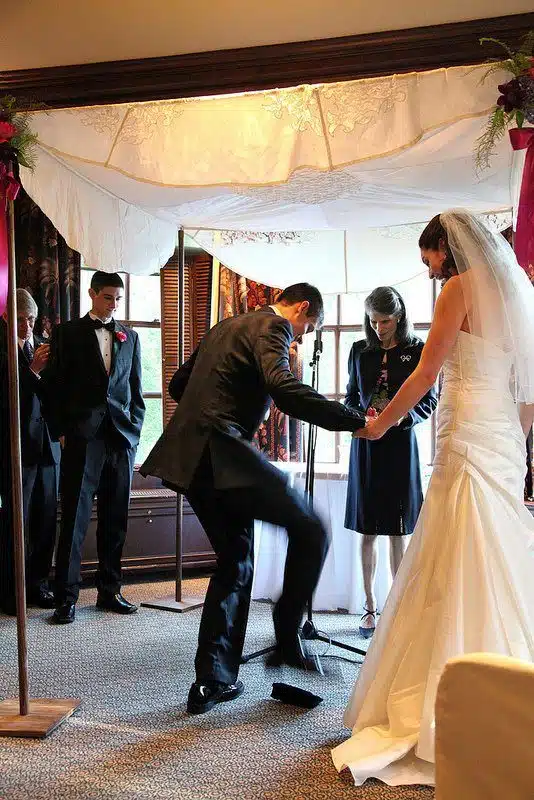
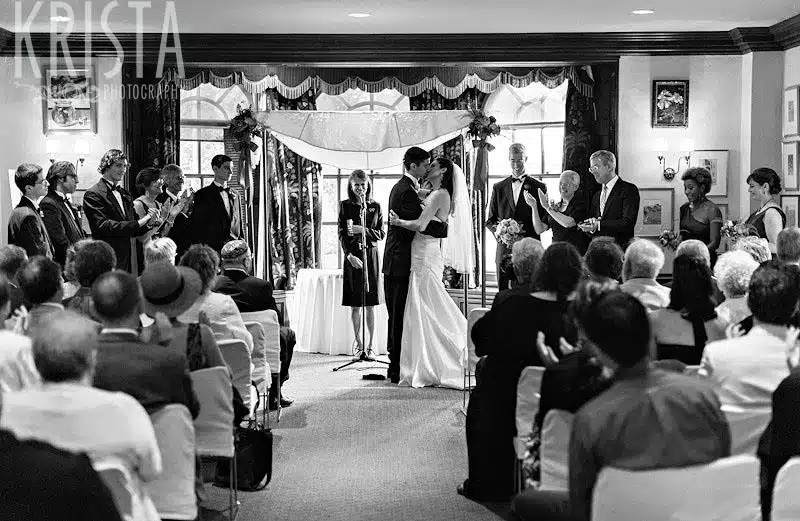

Hank Swager
Monday 22nd of July 2019
One of my bucket list items was being able to lift a bride up during the The Horah. My buddy Saul made sure that I had a spot on his wife's chair at his wedding. It is such a fun tradition.
Lillie Marshall
Monday 22nd of July 2019
So glad you got to do it!
Ashley Johnson
Monday 8th of July 2019
I liked that you said that the words and language in your Ketubah can be customized to fit the style of your particular marriage so that it offers uniqueness and romance to your special day. I would imagine that creating a personalized Ketubah to reflect on throughout your marriage would be a great start to a lifetime of love and happiness. I will consider implementing a Ketubah into my wedding so that my husband and I can have a document that expresses our love for each other.
Lillie Marshall
Tuesday 9th of July 2019
Yes!
Adela @FourJandals
Friday 9th of November 2012
I have always thought Jewish weddings look like great fun. Congratulations to you both, what a stunning bride :)
Lillie
Friday 9th of November 2012
Thanks so much! Yes, Jewish weddings can be super fun!
Stace Hamilton
Friday 2nd of November 2012
I read the entire article Ms. Marshall. Very informative, I enjoyed it along with the photos. This is the mosr precise and organized wedding ever. :)
Lillie
Friday 2nd of November 2012
Glad it was useful! You are right that it was sooooo organized. :)
Ruth (Tanama Tales)
Thursday 1st of November 2012
Beautiful! I have never been to a Jewish wedding but learned a lot from your post. The ring presented here is to die for. Wow!!!
Lillie
Thursday 1st of November 2012
Woo hoo! :)